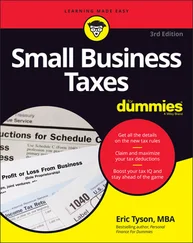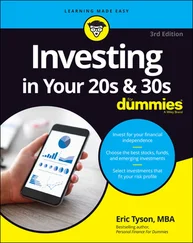Now, remember that in my example, I suggested that the worker be able to invest half of his Social Security retirement account contributions. So, he would still qualify for half of the normal Social Security retirement income benefit when he reaches the retirement age based upon his year of birth. Full retirement age is 67 for those born in or after 1960. A person who has been making about $50,000 per year (in today’s dollars) throughout their adult years and retiring at their full retirement age today would receive a monthly benefit amount of about $1,800 from Social Security. So, if they instead got half of that amount, they’d be receiving about $900 per month from Social Security. But they would also have well over one million dollars in their Social Security Choice investment account, as I explain earlier.
Now, what about the money in this person’s investment account that we previously calculated to be $1,377,870? At age 67 when Social Security kicks in for this person, he could elect to convert his Social Security Choice investment account balance into a monthly stream of income, which is called annuitization. For a single person, Vanguard’s annuity program would agree to pay $7,520 monthly for life! If this account holder were married, the couple would get $6,160 per month for the lives of both spouses.
These are simply stunning amounts and demonstrate the power of providing a mechanism for modest income workers to build wealth by investing in a diversified portfolio of stocks over the long term. And, please remember that this would be an optional choice-based system. Folks could choose to remain fully in the traditional Social Security system, or they could choose to direct a modest portion (in my example, half) of their Social Security tax payments into a highly diversified stock investment account. Workers could be provided with the option of directing smaller portions — like 25 percent — of their Social Security payments into the Choice investment account.
Also, the investment balance could be used in other ways. The account holder could choose to take some of the money and buy a home for their retirement, help pay for their grandkids’ education costs, etc. They could help their kids with a down-payment to purchase a home. They could annuitize part of the account.
The beauty of Social Security Choice, especially for lower income earners, is that it retains the best aspect of the Social Security system — forced savings — but provides a much better investment option that enables real growth.
To make Social Security Choice work, there is an important funding detail to work out. Social Security is a “pay as you go” system, which means that the benefits going to today’s retirees are funded by current workers’ Social Security tax payments. So, if some percentage of workers are choosing to send a portion of their Social Security taxes into private investment accounts, those amounts need to be made up somehow in the short term. (Longer-term, those workers putting money into a Choice account would be drawing lower Social Security benefits once they retire.) One idea is to limit access to Social Security Choice, at least initially, to those making less than a certain income — say $100,000 — with the logic being that higher-income earners have more wherewithal and options for building wealth. That would reduce the amount of new funding required.
Each decade you delay saving approximately doubles the percentage of your earnings that you need to save to meet your goals. For example, if saving 5 percent per year in your early 20s gets you to your retirement goal, waiting until your 30s to start may mean socking away 10 percent to reach that same goal; waiting until your 40s, 20 percent. Beyond that, the numbers get truly daunting.
If you enjoy spending money and living for today, you should be more motivated to start saving sooner. The longer that you wait to save, the more you ultimately need to save and, therefore, the less you can spend today!
Checking out retirement account options
If you earn employment income (or receive alimony), you have options for putting money away in a retirement account that compounds without taxation until you withdraw the money. In most cases, your contributions to these retirement accounts are tax-deductible.
If you work for a for-profit company, you may have access to a 401(k) plan, which typically allows you to save up to $19,500 per year (for tax year 2020). Many nonprofit organizations offer 403(b) plans to their employees. As with a 401(k), your contributions to a 403(b) plan are deductible on both your federal and state taxes in the year that you make them. Nonprofit employees can generally contribute up to 20 percent or $19,500 of their salaries, whichever is less. In addition to the upfront and ongoing tax benefits of these retirement savings plans, some employers match your contributions.
Older employees (defined as being at least age 50) can contribute even more into these company-based plans — up to $26,000 in 2020. Of course, the challenge for many people is to reduce their spending enough to be able to sock away these kinds of contributions.
If you’re self-employed, you can establish your own retirement savings plans for yourself and any employees that you have. In fact, with all types of self-employment retirement plans, business owners need to cover their employees as well. A simplified employee pension individual retirement account (SEP-IRA) allows you to sock away about 20 percent of your self-employment income (business revenue minus expenses), up to an annual maximum of $57,000 (for tax year 2020). Each year, you decide the amount you want to contribute — no minimums exist.
 If you’re an employee in a small business, you can’t establish your own SEP-IRA — that’s up to your employer. Many plans also allow business owners to exclude employees from receiving contributions until they complete a year or two of service.
If you’re an employee in a small business, you can’t establish your own SEP-IRA — that’s up to your employer. Many plans also allow business owners to exclude employees from receiving contributions until they complete a year or two of service.
Owners of small businesses shouldn’t deter themselves from doing a retirement plan because employees may receive contributions, too. If business owners take the time to educate employees about the value and importance of these plans in saving for the future and reducing taxes, they’ll see it as a rightful part of their total compensation package.
One-person small business owners can also consider the individual or solo 401(k). You can put away the same amount of money as in a SEP-IRA as an employer contribution and then also contribute as an employee up to the employee limits for a 401(k) plan as detailed earlier in this section. If you have employees, these plans can get complicated quickly because you will generally need to cover them in the plan and meet other “discrimination testing” requirements. Speak with a tax advisor if you need more information.
If you work for a company that doesn’t offer a retirement savings plan, or if you’ve exhausted contributing to your company’s plan, consider an individual retirement account (IRA). Anyone with employment income (or who receives alimony) may contribute up to $6,000 each year to an IRA (or the amount of your employment or alimony income if it’s less than $6,000 in a year). If you’re a nonworking spouse, you’re eligible to put up to $6,000 per year into a spousal IRA. Those age 50 and older can put away up to $7,000 per year (effective in 2020).
Your contributions to an IRA may or may not be tax-deductible. For tax year 2020, if you’re covered by a retirement plan at work, you’re single, and your adjusted gross income is $65,000 or less for the year, you can deduct your full IRA contribution. If you’re married and you file your taxes jointly, you’re entitled to a full IRA deduction if your AGI is $104,000 per year or less.
Читать дальше

 If you’re an employee in a small business, you can’t establish your own SEP-IRA — that’s up to your employer. Many plans also allow business owners to exclude employees from receiving contributions until they complete a year or two of service.
If you’re an employee in a small business, you can’t establish your own SEP-IRA — that’s up to your employer. Many plans also allow business owners to exclude employees from receiving contributions until they complete a year or two of service.










